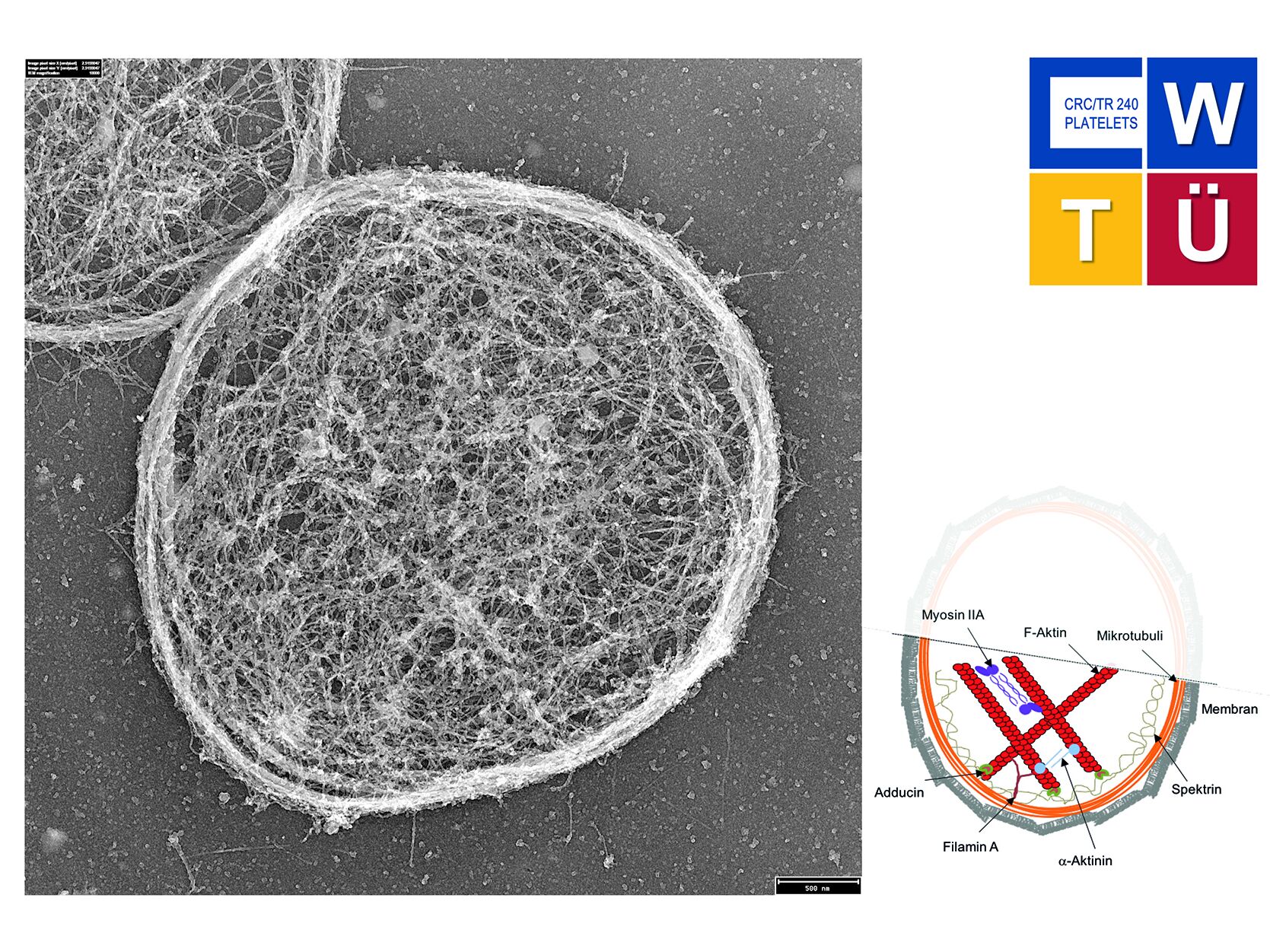Biologists, doctors, pharmacists, physicists and biomedical scientists from Würzburg, Greifswald, Tübingen, Dublin and Pavia in Italy have developed methods to measure the force with which a single platelet closes a wound. With these results, the treatment of people with rare congenital platelet disorders can be improved. The increased bleeding tendency in people with a defect in the MYH9 (myosin heavy chain 9) gene is due to the fact that the platelets are impaired in their ability to exert force.
‘This is a prime example of how the Collaborative Research Centre Transregio (TRR) 240 on platelet research improves patient treatment by bringing together the expertise of scientists from different fields,’ say Juliane Baumann and Dr Markus Bender from the Department of Experimental Biomedicine at Würzburg University Hospital. Together with Laura Sachs, Dr. Raghavendra Palankar and Dr. Carlo Zaninetti from the Department of Transfusion Medicine at University Medicine Greifswald and Prof. Dr. Oliver Otto from the Institute of Physics at the University of Greifswald, they examined platelets from three different mouse lines that carry the point mutation that occurs most frequently in MYH9 patients. ‘We then carried out our investigations on platelets from patients with these mutations, which confirmed our results in mice,’ reports Prof. Dr. Andreas Greinacher, head of the Department for Transfusion Medicine at the University of Greifswald, a national reference centre for the diagnosis of thrombocyte diseases in humans. ‘This broad and translational approach is one of the strengths of the project, along with the interdisciplinary collaboration across various locations,’ comments Dr Markus Bender, who is the final author of the publication together with Dr Raghavendra Palankar.
A year ago, the work of the Greifswald and Würzburg scientists already attracted a great deal of attention when they clarified another platelet disease, the vaccine side effect of the Coronavirus vaccination with the AstraZeneca vaccine.
Further Information
Publication
Baumann J, Sachs L, Otto O, Schoen I, Nestler P, Zaninetti C, Kenny M, Kranz R, von Eysmondt H, Rodriguez J, Schäffer TE, Nagy Z, Greinacher A, Palankar R, Bender M. Reduced platelet forces underlie impaired hemostasis in mouse models of MYH9-related disease. Sci Adv. 2022 May 20; 8(20): eabn2627. doi: 10.1126/sciadv.abn2627. Epub 2022 May 18. PMID: 35584211.
https://www.science.org/doi/10.1126/sciadv.abn2627
Contact at University Medicine Greifswald
Prof. Dr. Andreas Greinacher
Head of the Department of Transfusion Medicine
Ferdinand-Sauerbruch-Straße 1, 17489 Greifswald
Tel.: +49 3834 86 5479
andreas.greinachermed.uni-greifswaldde
www.medizin.uni-greifswald.de

